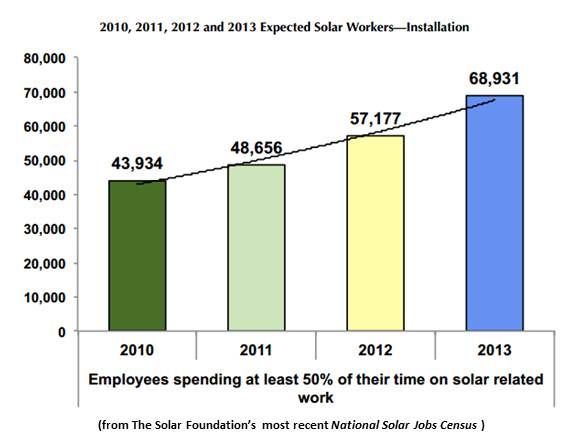Installers have traditionally been the solar industry’s independents -- but can they stay small and local with the emergence of national installation providers like SolarCity and Vivint?
“There are businesses now planning both ways,” explained GTM Research VP Shayle Kann while introducing a debate on the question at GTM’s U.S. Solar Market Insight conference. “Which way will solar go?”
Arguing that large national installers will win out was Vivint Solar VP Thomas Plagemann. Vivint, Kann noted, is new to solar, but in less than two years has become the second biggest national installer behind SolarCity.
“In this business, we have to take three essential steps,” Plagemann said. “Find and acquire customers, design and install systems, and finance the systems.”
Financing has to come first, he explained. “A typical equity finance fund of $50 million, at $2.50 per watt and 5 kilowatts per system, means 4,000 systems. Using small installers to get that scale cedes control.”
Vivint has installed home security systems nationally for twenty years and keeps that control. “We acquire customers. That’s what we do. We took that customer acquisition engine and applied it to solar. Our success in the last twelve months is the answer to this debate.”
Training installers to deliver “the uniformity and reliability we promise increases overhead,” Plagemann said. “But we get standardization and increased purchasing power, and decrease our cost of customer acquisition.”
SunPower, Kann said, “is the primary enabler of small U.S. installers.” Its Residential Solar VP/General Manager Martin DeBono argued that independent locals will prevail.
“Small business is the second most popular institution in the U.S., after the military,” he said. People want to buy from small businesses.” In the home building industry, 40 percent of new homes are built by large national builders, but 60 percent are built by small local builders. Solar installation will break out the same way, he said.
“Large solar installers can leverage the advantage of scale as long as everything is uniform,” he argued, “but variance is the rule in solar, and variance is anathema to scale. For customers that don’t fit into a box, local installers are the answer. Variance will cap the rise of national installers.”
Establishing a partnership with SunPower provides local installers with a national brand, training, quality panels, and loans, leases, or working capital. “Our industry-leading performance answers the question being debated.”
“National providers will end up with a heterogeneous fleet of panels that will eventually fail,” he warned, “and the manufacturer will no longer be there to support them.”
The benefits of scale will attract customers without variances to national installers, DeBono said. “But the majority of installations will be done by local installers in partnership with national panel manufacturers.”

“Everyone loves small businesses,” Plagemann agreed. “But will they want to buy solar from a small shop or a big provider that is known to provide excellent service?”
To keep costs low, Vivint has so far stressed low variance and repeatability, he acknowledged. “But we are doing over 1,000 systems per month now and expect to grow. We will get better at variance.”
There is enough “white space,” Plagemann added, “for multiple models to coexist for the foreseeable future. We are not competing against each other, but [rather] against the utility price.”
And Vivint’s fleet of panels comes from Trina and Yingli, he noted. “They are Tier 1 manufacturers that nobody has a problem with and they will be around for the long term.”
Because "installers love the work and want to change the world,” DeBono said, they provide consumers with better service at a lower cost. “As long as there are the variance challenges, local installers will be the majority.”
“We’re not a retail business,” Plagemann said. “We’re developers. We are investing in energy infrastructure with offtakers, in 5-kilowatt chunks. Power plants are the closest analogous industry. Success is in controlling the entire value chain.”
“There is still market confusion,” an independent installer said during the questions period. “Customers don’t recognize brands except, maybe, SolarCity. It is a tremendous opportunity for small businesses. We all have the opportunity to be the next Google or Amazon.”
“We are working to establish brand recognition so we can get to economies of scale in customer acquisition,” DeBono replied. “We have opened showrooms where we tell customers about our low cost of energy. The SunPower brand can scale to offset Vivint’s advantage.”
“We are doing a lot of thinking about brand,” Plagemann said. “And, yes, we are just at the beginning of something with overwhelming potential. But the companies that scale will be the ones to survive. And to scale, they will need capital, because in the end, panels are commodities and what we sell is the cost of energy.”
Watch the full debate at the U.S. Solar Market Insight Conference 2013:



